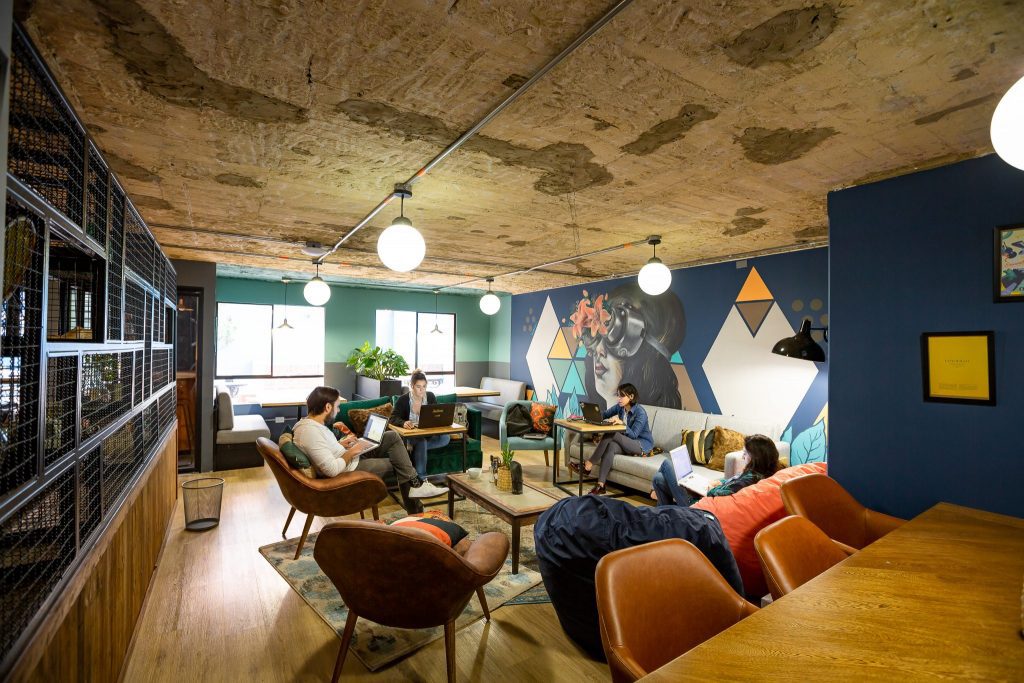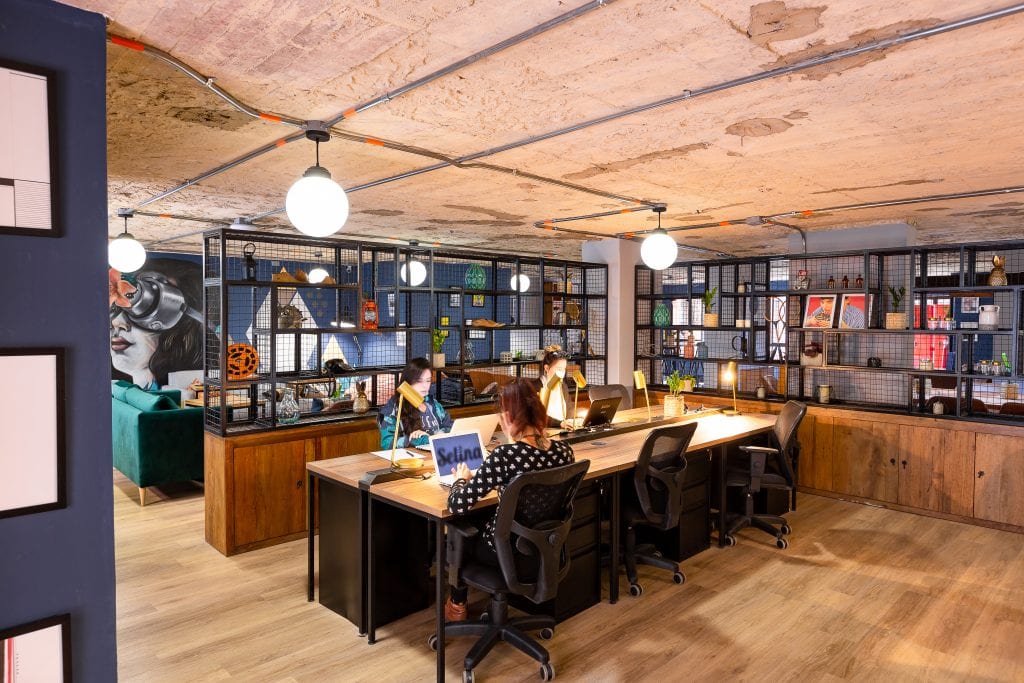Selina Hotels Step Up Against WeWork in Latin America

Photo Caption: Digital nomads busy at work at a Selina hotel in the Chapinero neighborhood of Bogotá, Colombia.
Skift Take
WeWork’s co-working model may be fledgling, but hotels are putting a twist on the concept to connect locals and digital nomads.
Each morning across the far-reaches of cities like Bogotá, Mexico City, and Puerto Viejo in Costa Rica, digital nomads start to gather to begin their workdays. As the laptops get flipped open and the headphones popped on, these remote workers are not settling in at a WeWork space. Instead, they've come to a Selina hotel — hip, affordable, and increasingly accessible.
In the wake of the high-profile financial woes of New York-based WeWork, which has started laying off about 2,400 employees after growing rapidly and failing to launch an public offering in September, hotels are increasingly taking cues from the company to add similarly styled workspaces. This is especially evident in Latin America, which WeWork once named as its fastest-growing region.
Since opening its first Mexico City office in 2016 and expanding a year later into South America via Argentina, the company counted more than 34 offices in the region as of May, 2019. But one unlikely competitor is hospitality company Selina, known for its innovative approach to blending hostel-style dorms with upscale private rooms within the same property.
Selina says that 40 of its 48 properties in Latin America contain co-working spaces. It competes with WeWork and other companies to attract not just digital nomads, but local companies and entrepreneurs who find value in networking with an ever-changing mix of travelers. While Selina’s co-working spaces are much smaller than the towering WeWork offices now standard among the world’s capitals, it continues to expand its worldwide brand reach with new properties slated for places like Chelsea, New York City, and Liverpool.
Co-working has long been a core element of Selina’s so-called “ecosystem” for digital nomads, ever since the company was founded in a Panamanian surfing town by real estate developers Rafael Museri and Daniel Rudasevski (It should be noted that ex-WeWork CEO Adam Neumann has backed Selina). That model includes a focus on local gastronomy, daily tours, wellness offerings like yoga, and a mix of room styles.
During a recent visit to one of Selina’s two co-working spaces in Bogotá, Colombia—the Parque 93 location in the ritzy neighborhood of Chicó —a mix of travelers working on computers and business professionals were spread out across designated areas for specific activities. The café and bar area open to the public attracted groups having meetings over coffee, whereas guests worked casually on their laptops in the Selina “home” shared kitchen space. In a separate wing of the property lies the co-working space, which is locked and only accessible to those who sign up for one of Selina’s daily, weekly or monthly co-working plans. The Parque 93 location is about a 15-minute walk from the closest WeWork.
In Bogotá, locals occupy about 70 percent of Selina’s two co-working spaces there, said Claude Paul, general manager for two of three Selina properties in the city. These are largely made up of individuals or small teams that work in tech, design or related fields. The remaining 30 percent are digital nomads. The latter group of travelers tend to mix up their stay, Paul says, renting a week’s worth of co-working space and then spending another week sightseeing, for example. Other popular co-working locations in Colombia include the hipster hotspot of Chapinero in Bogotá, the tech hub of Medellín and the Caribbean vacation gateway of Cartagena. Co-working prices vary depending on the location—travelers can snag a hot desk for $5 per day in Granada, Nicaragua, whereas those based in Medellín can spend upwards of $160 per month for a dedicated desk.
This squares with a global trend of digital nomads seeking flexibility. “Many workers are practicing what we call ‘workcations’ to test the waters without going fully into the nomadic lifestyle,” MBO Partners founder Gene Zaino said. “Not everyone is selling their homes to live in a camper van. These are shorter duration trips of a few days or weeks to allow people to have the work-life balance they need to enjoy life, either as an alternative to traditional retirement or to enjoy a more flexible schedule and work on their own terms.”
According to Paul, Selina tries to create a sense of community organically by hosting events that travelers and locals alike will find fun and relevant. That could include hackathons, professional chats and concerts that provide opportunities to connect locals with transiting digital nomads. Sometimes groups also use Selina properties for their own professional events. During a recent visit to Selina’s Medellín location, for example, a group of young Colombians decked out a big auditorium space with rows of laptops and camera equipment for a film bootcamp.
“The idea is that the local community comes to Selina also and interacts with those digital nomads, but in an organic way—not a forced way,” Paul said during an interview at the Parque 93 location. Each Selina property had a past life as another business—in this case, a former hotel has been spruced up with quirky touches like vintage typewriters hanging from the walls and a cozy library full of old books and trinkets. The Medellín space, on the other hand, is covered in graffiti and murals from local artists. And while all Selina properties include cozy touches like colorful pillows, lamps and unique artworks, room service and televisions are left out of the picture to encourage interaction among guests.
Selina said its “ecosystem” approach is unique, however other hotels and businesses in the hospitality industry are introducing amenities that make it easier for backpack-clad professionals to do business on the road. Los Patios Hostel in the backpacker-friendly neighborhood of Manila, Medellín, offers day, week and month-long passes to digital nomads, remote workers and startup employees. But while hotels are certainly updating with better spaces to work, it is still not clear whether there's enough of a business there yet for more formal co-working plans.
Kristin Majcher is a Skift contributor based in Bogotá, Colombia.


